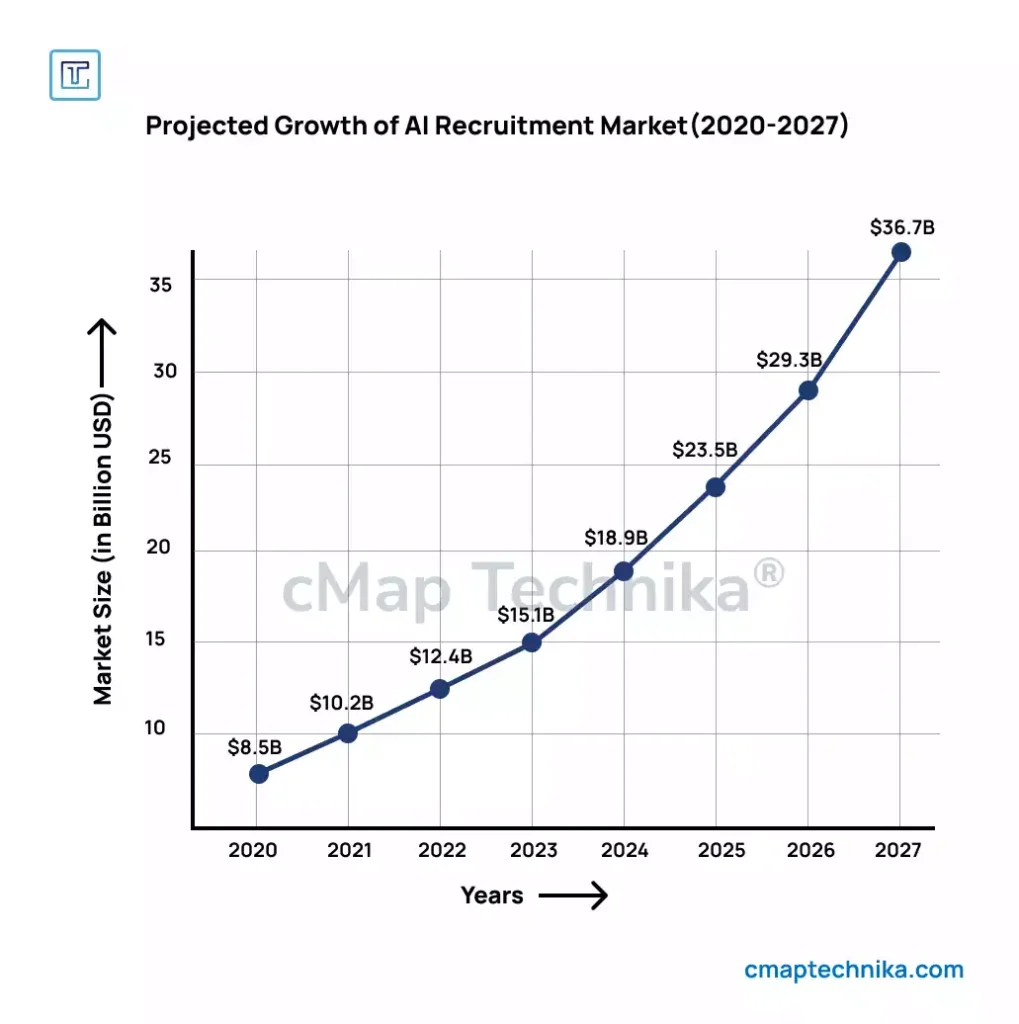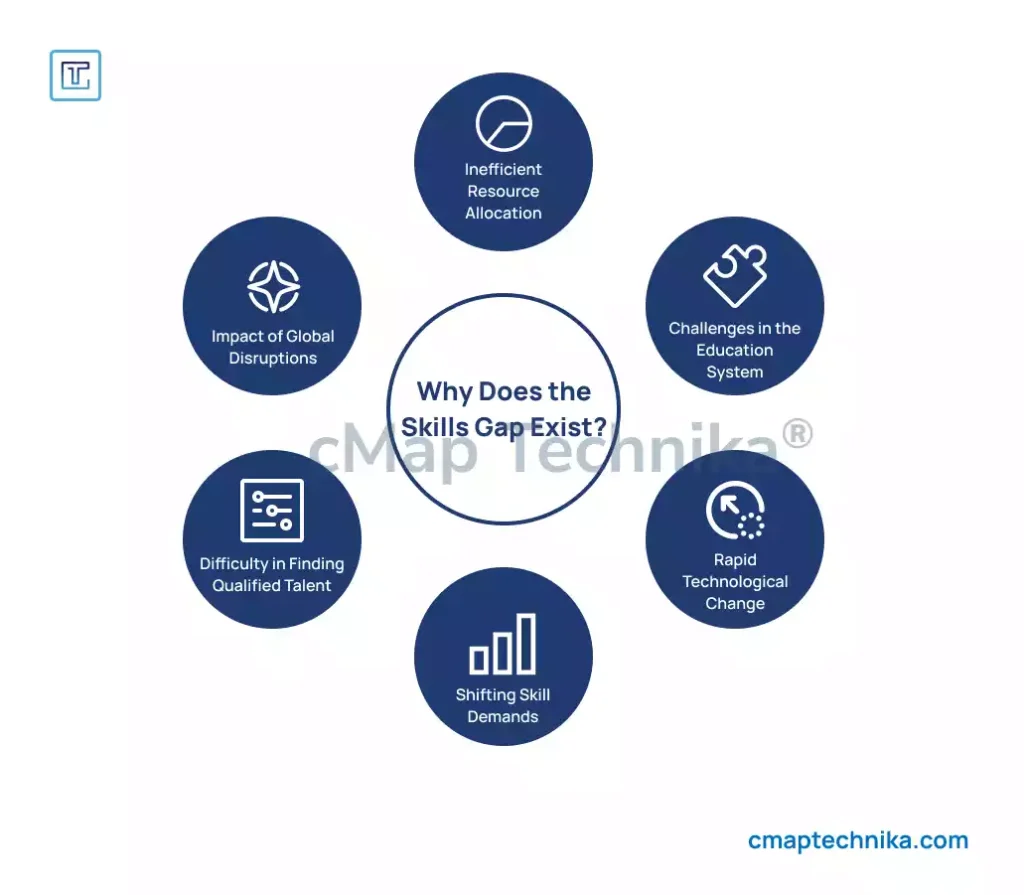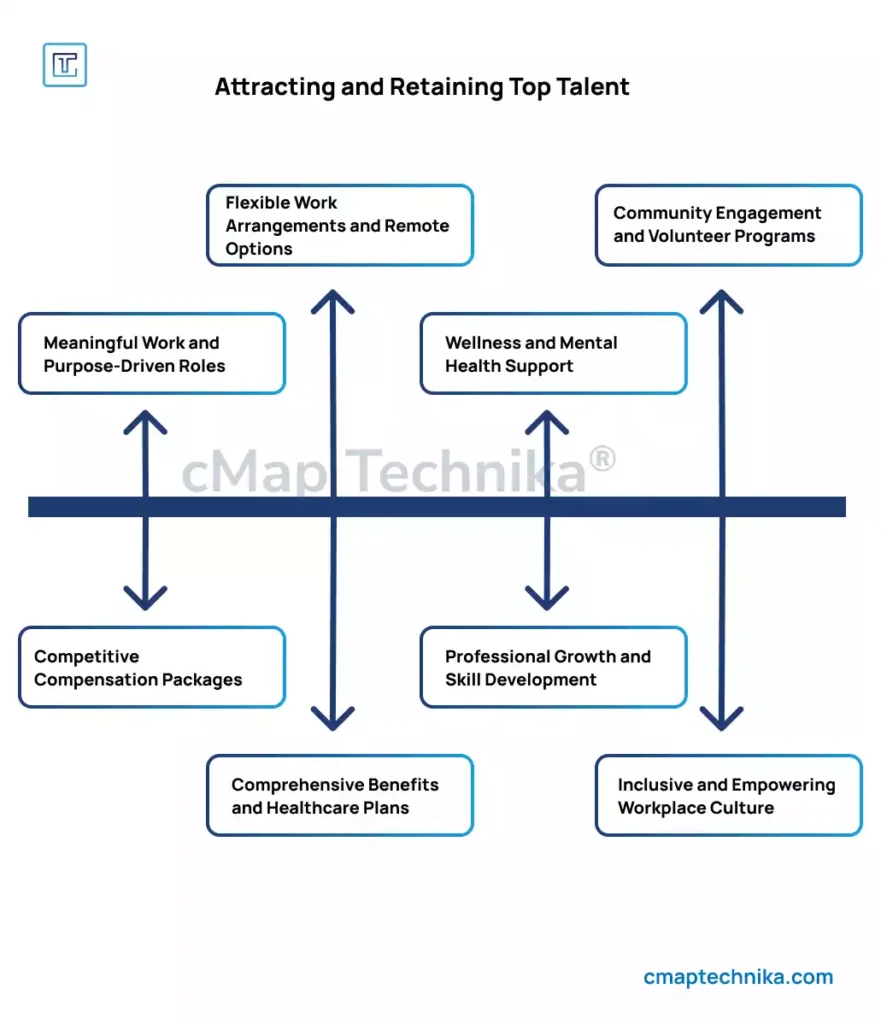Introduction

The global talent shortage is one of the most significant challenges facing businesses today. Across industries, companies are struggling to find, attract, and retain skilled professionals. According to a 2024 report by ManpowerGroup, nearly 75% of employers worldwide reported difficulty filling positions due to a lack of qualified candidates — the highest figure in over a decade. Factors such as rapid technological changes, shifting workforce expectations, and evolving skill requirements have created a complex and competitive hiring environment.
Organizations that fail to address talent shortages risk falling behind their competitors, losing market share, and missing out on growth opportunities. However, companies that adopt strategic approaches to talent acquisition, employee engagement, and workforce planning can overcome these challenges and position themselves for long-term success.
This guide explores the causes of the talent shortage, the impact on businesses, and — most importantly — practical strategies for attracting and retaining top professionals.
Understanding the Talent Shortage
The talent shortage stems from several interconnected factors:
1. Skills Gap and Changing Job Requirements

As industries become more digital and data-driven, the demand for highly specialized skills has outpaced the supply of qualified professionals. The rise of AI, automation, and cloud computing has created new job categories that require technical expertise and adaptability.
- Tech Skills: Expertise in AI, machine learning, data analysis, and cybersecurity is highly sought after.
- Soft Skills: Communication, problem-solving, and emotional intelligence are equally critical as automation handles more technical tasks.
- Leadership Skills: Strong leadership and strategic thinking remain in high demand, especially in industries experiencing rapid transformation.
Example:
The technology sector alone faces a shortfall of over 2 million qualified cybersecurity professionals, according to a 2023 report by Cybersecurity Ventures. Despite rising salaries and incentives, the gap continues to grow due to the complexity and evolving nature of the field.
2. Demographic Shifts and Workforce Expectations
An aging workforce, declining birth rates, and changing career preferences have reshaped the labor market. In developed economies, the retirement of baby boomers has created a significant void, with younger generations unwilling or unprepared to fill these roles.
- Millennials and Gen Z place higher value on work-life balance, career development, and purpose-driven work than previous generations.
- Remote work and hybrid models have become non-negotiable for many professionals, forcing employers to adapt or lose out on top talent.
- The rise of the gig economy has drawn skilled professionals toward freelance and contract work rather than traditional full-time employment.
Example:
A 2023 survey by Gallup found that 64% of millennial employees would leave a job if it did not offer flexible work arrangements, even if the pay was competitive.
3. Increased Competition for Talent
Companies are not only competing within their industries but also across sectors for the same talent pool. Skilled professionals in areas such as software engineering, digital marketing, and financial analysis are being recruited by companies in technology, finance, healthcare, and beyond.
- Companies like Amazon, Google, and Apple have expanded their hiring beyond technology roles, recruiting top talent in operations, logistics, and customer experience.
- Traditional industries such as manufacturing and healthcare are now investing in digital transformation, increasing the demand for tech-savvy professionals.
The Impact of Talent Shortages on Businesses
Talent shortages have far-reaching consequences beyond unfilled positions:
1. Rising Recruitment Costs
The cost of hiring has increased significantly due to competitive salary offers, signing bonuses, and expanded benefits packages.
- According to SHRM, the average cost-per-hire increased by 20% between 2020 and 2023, driven largely by rising competition for top candidates.
2. Decreased Productivity and Performance
Without the right talent, companies face operational inefficiencies, increased workloads for existing staff, and missed business opportunities.
- Overworked employees are more likely to experience burnout, leading to higher turnover rates and further exacerbating the talent shortage.
3. Stalled Innovation
Talent shortages limit an organization’s ability to pursue new growth strategies, adopt emerging technologies, and innovate in competitive markets.
- A lack of qualified AI engineers, for example, can delay the deployment of automation and data-driven decision-making tools.
How to Attract Top Professionals

Despite these challenges, businesses can implement strategic approaches to attract and retain top talent. Here’s how:
1. Build a Strong Employer Brand
A compelling employer brand helps differentiate a company in a crowded job market and attracts talent aligned with the company’s values and mission.
- Highlight your company’s values, purpose, and culture in job postings and recruitment materials.
- Encourage employee-generated content on platforms like LinkedIn to showcase company culture authentically.
- Invest in Glassdoor and Indeed reviews to improve company reputation and address negative feedback.
Example:
Salesforce consistently ranks as a top employer due to its focus on employee well-being, career development, and commitment to social impact. Its employee satisfaction rates exceed 90% according to Glassdoor.
2. Offer Competitive Compensation and Benefits
Salary alone isn’t enough to attract top talent. Companies must offer a comprehensive compensation package that includes:
- Performance-based bonuses and profit-sharing.
- Health and wellness benefits (including mental health support).
- Flexible work arrangements and remote work options.
- Professional development budgets and training programs.
Example:
Spotify introduced a “Work From Anywhere” policy, allowing employees to work from any location while still receiving location-based pay and benefits. This strategy improved retention rates by 25%.
3. Create Career Development Pathways
Top professionals seek opportunities for growth and advancement. A clear career development structure can be a major competitive advantage.
- Implement mentorship programs and internal mobility options.
- Offer continuous learning through industry certifications and skills development.
- Provide leadership training and cross-functional projects.
Example:
PwC’s “My Career” initiative allows employees to explore different roles within the company, leading to increased job satisfaction and a 30% reduction in turnover.
4. Improve Recruitment Strategies with AI and Data
AI and data-driven tools can enhance recruitment efficiency and improve candidate matching.
- Use AI-powered resume screening tools to identify the most qualified candidates.
- Leverage predictive analytics to assess cultural fit and performance potential.
- Use recruitment platforms like LinkedIn Recruiter and Entelo to target passive candidates.
Example:
Unilever’s AI-based recruitment platform reduced the time-to-hire by 75% and improved the quality of new hires through predictive modeling and automated screening.
5. Foster a Diverse and Inclusive Work Environment
Diversity and inclusion are critical factors for attracting top talent and improving employee retention.
- Develop bias-free hiring practices using AI-driven recruitment tools.
- Create employee resource groups (ERGs) and mentorship programs for underrepresented talent.
- Implement diversity targets and track progress.
Example:
Microsoft’s diversity-focused hiring strategy increased the percentage of women in technical roles by 35% over a three-year period.
Conclusion
The talent shortage presents a formidable challenge for businesses worldwide, but it also creates an opportunity for companies to rethink their talent acquisition strategies. By building a strong employer brand, offering competitive compensation, investing in career development, and leveraging AI-driven recruitment tools, organizations can position themselves as employers of choice. Moreover, fostering a diverse and inclusive work culture will not only attract top professionals but also enhance employee satisfaction and retention.
The companies that adapt to these shifting dynamics will not only overcome the talent shortage but will also gain a strategic advantage in the race for top talent.






